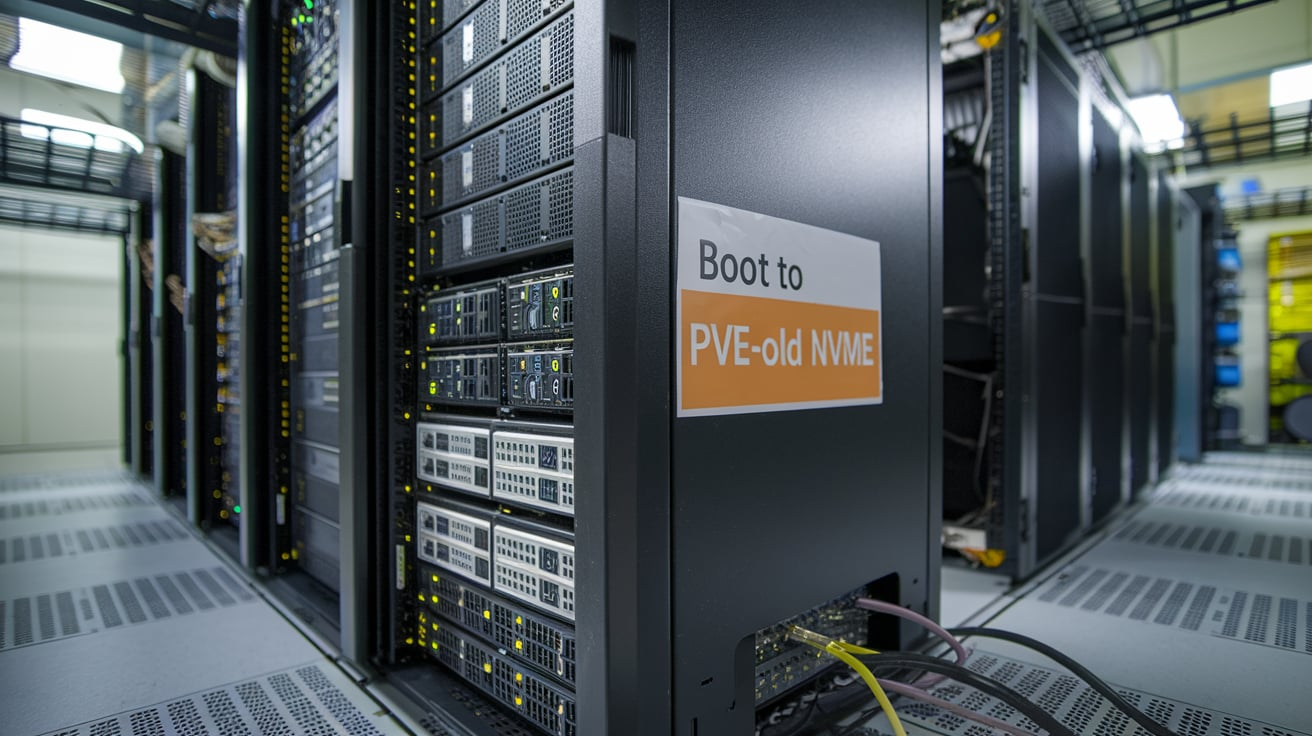Introduction
Boot to PVE-old NVMe refers to configuring a system to boot an operating system from an older NVMe drive within a Proxmox Virtual Environment (PVE). This process may require adjusting the system’s BIOS settings for NVMe support, ensuring the correct bootloader is in place, and possibly updating system configurations such as GRUB or UEFI. It’s essential to verify that the old NVMe drive is compatible and in good working condition and ensure proper system compatibility for a smooth boot process.
Understanding Boot to PVE-Old NVMe Setup
To boot to PVE-old NVMe, the system must be configured to recognize the NVMe drive as the primary boot device. This involves adjusting the BIOS settings to ensure the NVMe drive is detected correctly. You must ensure the system can load Proxmox Virtual Environment (PVE) from the older NVMe storage. Additionally, the bootloader must be set up correctly to facilitate smooth booting. This ensures compatibility between your system and the drive.
BIOS Configuration for Boot to PVE-Old NVMe
A critical step in boot to PVE-old NVMe is ensuring that the BIOS settings are configured to enable NVMe support. Many older systems require a firmware update to recognize NVMe drives. Once the BIOS recognizes the NVMe drive, it must be set as the primary boot device. Ensuring the correct order in boot settings is essential for smooth and fast booting. This setup provides the foundation for successful booting into the Proxmox environment.
Bootloader Setup for Boot to PVE-Old NVMe
For a successful boot to PVE-old NVMe, the bootloader must be installed and configured correctly. In Proxmox, GRUB or other bootloaders may be used, and they should be adjusted to point to the correct NVMe partition. The GRUB configuration must also match the system’s architecture and partition layout. Failure to configure the bootloader can result in boot failure or system errors. An adequately set bootloader ensures the system boots up seamlessly each time.
Compatibility Considerations for Boot to PVE-Old NVMe
When attempting to boot to PVE-old NVMe, system compatibility is a crucial factor to consider. Older systems may not have full support for NVMe drives, which can cause delays or errors in the boot process. It’s essential to check whether the hardware supports booting from NVMe and whether it is compatible with the PVE version. Compatibility can also extend to the NVMe drive, as older models might have issues with modern systems. Upgrading firmware can help resolve some of these issues.
Updating Firmware for Boot to PVE-Old NVMe
Firmware updates are vital in ensuring a successful boot to PVE-old NVMe. Many older systems may not have native support for NVMe, and updating the BIOS or UEFI can help address these limitations. Ensuring that both the system firmware and the NVMe drive firmware are up-to-date is crucial for optimizing performance and stability. Firmware updates are essential not only for compatibility but also for ensuring that all features of the NVMe drive function properly during boot.
Troubleshooting Boot to PVE-Old NVMe Issues
Troubleshooting is essential if you encounter issues while trying to boot to PVE-old NVMe. One common problem is the system not recognizing the NVMe drive during boot, which can be addressed by ensuring the correct BIOS settings and updating drivers. Another issue is the bootloader failing to point to the correct boot partition, which requires reconfiguration. Monitoring the system logs can also help identify specific errors related to the NVMe drive or bootloader configuration.
Performance Considerations for Boot to PVE-Old NVMe
Performance is an important aspect when attempting to boot to PVE-old NVMe. NVMe drives generally offer faster read and write speeds compared to traditional SATA drives, which can result in quicker boot times. However, older NVMe drives may not reach their full performance potential on outdated hardware. Ensuring the system is optimized to utilize NVMe’s capabilities entirely is crucial. Proper system configuration and the correct drivers will help improve boot performance.
Managing Storage for Boot to PVE-Old NVMe
When setting up the boot to PVE-old NVMe, managing the storage effectively is essential. The system must recognize the NVMe drive as a bootable device, ensuring proper partitioning is critical. Proper storage management can help optimize boot times and ensure data is organized efficiently. It’s important to consider whether the NVMe drive will be used solely for booting or if it will also host virtual machines and other data. These factors influence how the drive is configured during the setup process.
Security Considerations for Boot to PVE-Old NVMe
Security is a critical aspect of boot to PVE-old NVMe. When booting from an older NVMe drive, the system must ensure that security protocols are in place to prevent unauthorized access. The operating system should be configured to support secure boot, which helps protect against malware and other security threats. Additionally, ensuring the NVMe drive is properly encrypted can protect data during boot. Keeping security software up-to-date is essential for maintaining the integrity of the system.
Long-Term Viability of Boot to PVE-Old NVMe
The long-term viability of boot to PVE-old NVMe depends on the condition of the NVMe drive and the system’s ability to handle future updates. Over time, older NVMe drives may experience performance degradation, affecting boot times and system stability. Regular monitoring and potential upgrades may be necessary to maintain optimal performance. However, with proper maintenance, a PVE system booting from an older NVMe drive can remain a reliable solution for several years.
Conclusion
Boot to PVE-old NVMe requires careful hardware and software component configuration to ensure compatibility and optimal performance. Key steps include updating BIOS, setting the correct bootloader, and ensuring the drive’s firmware is current. Regular maintenance, troubleshooting, and storage management are essential for long-term stability. Although older NVMe drives can still function well, staying mindful of potential issues such as performance degradation and security risks is critical.
